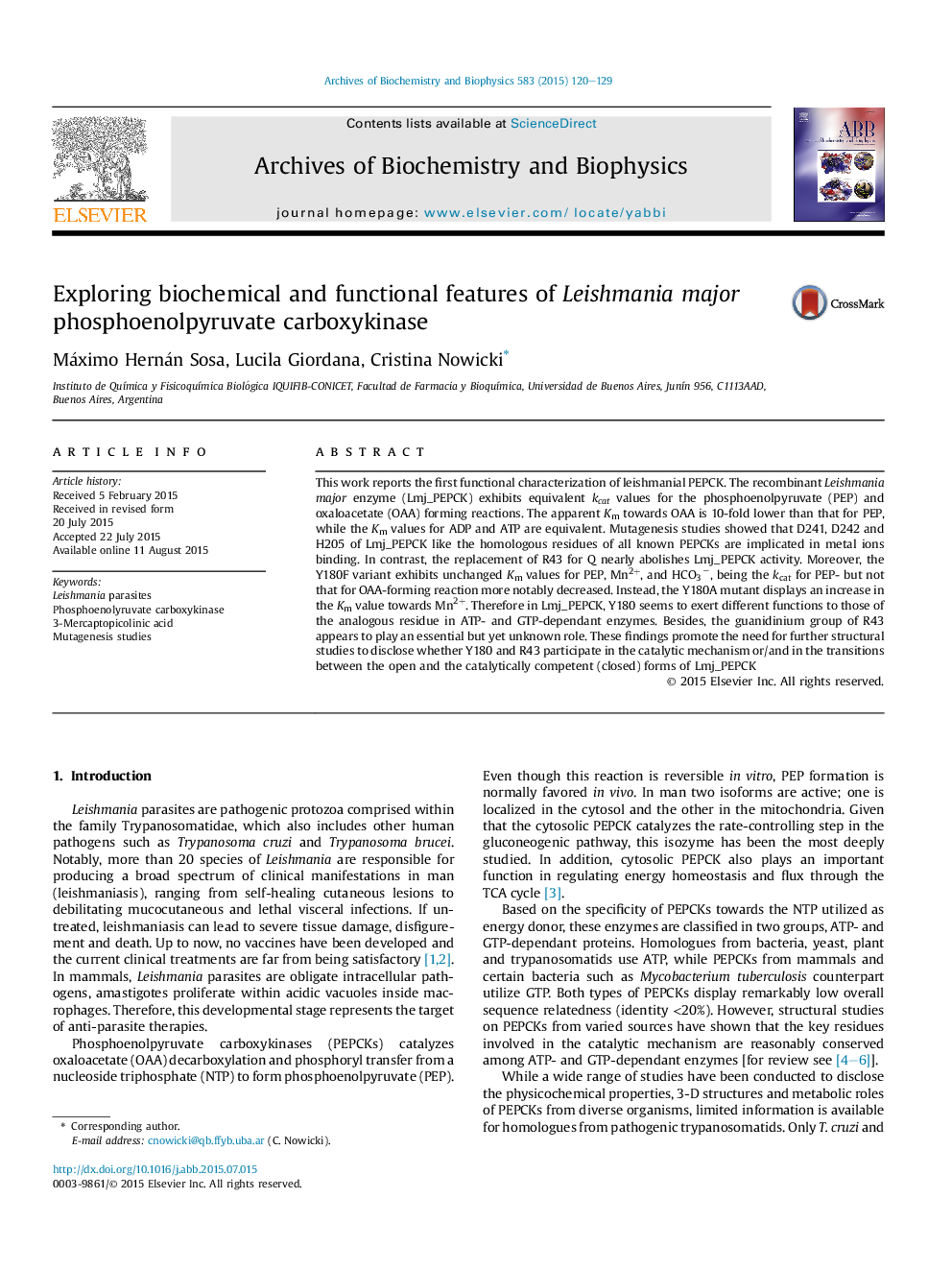| Article ID | Journal | Published Year | Pages | File Type |
|---|---|---|---|---|
| 1924976 | Archives of Biochemistry and Biophysics | 2015 | 10 Pages |
•First report of the purification and enzymatic characterization of leishmanial PEPCK.•The 6xHis tagged and untagged forms of L. major PEPCK were expressed in E. coli.•The change of R43 by Q lowers in about 31,000-fold the oxaloacetate forming reaction.•The change of Y180 by F drops the rate of phosphoenolpyruvate forming activity.
This work reports the first functional characterization of leishmanial PEPCK. The recombinant Leishmania major enzyme (Lmj_PEPCK) exhibits equivalent kcat values for the phosphoenolpyruvate (PEP) and oxaloacetate (OAA) forming reactions. The apparent Km towards OAA is 10-fold lower than that for PEP, while the Km values for ADP and ATP are equivalent. Mutagenesis studies showed that D241, D242 and H205 of Lmj_PEPCK like the homologous residues of all known PEPCKs are implicated in metal ions binding. In contrast, the replacement of R43 for Q nearly abolishes Lmj_PEPCK activity. Moreover, the Y180F variant exhibits unchanged Km values for PEP, Mn2+, and HCO3−HCO3−, being the kcat for PEP- but not that for OAA-forming reaction more notably decreased. Instead, the Y180A mutant displays an increase in the Km value towards Mn2+. Therefore in Lmj_PEPCK, Y180 seems to exert different functions to those of the analogous residue in ATP- and GTP-dependant enzymes. Besides, the guanidinium group of R43 appears to play an essential but yet unknown role. These findings promote the need for further structural studies to disclose whether Y180 and R43 participate in the catalytic mechanism or/and in the transitions between the open and the catalytically competent (closed) forms of Lmj_PEPCK
Graphical abstractFigure optionsDownload full-size imageDownload high-quality image (344 K)Download as PowerPoint slide
